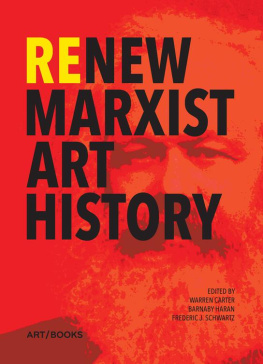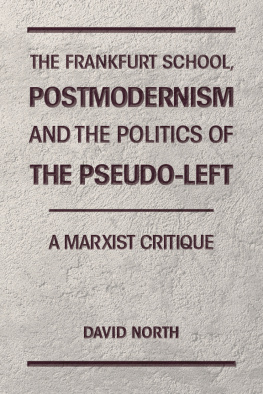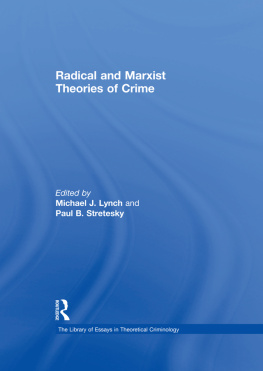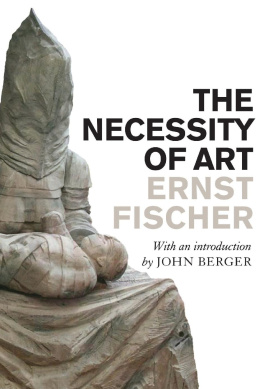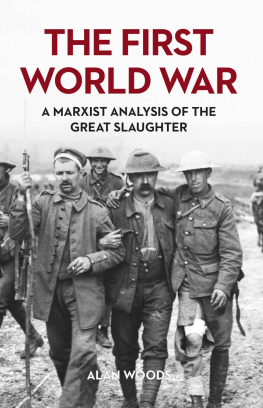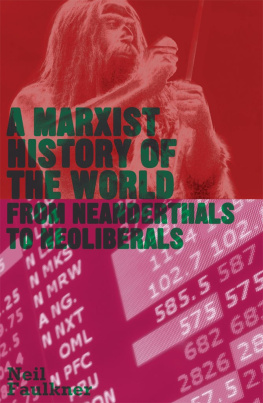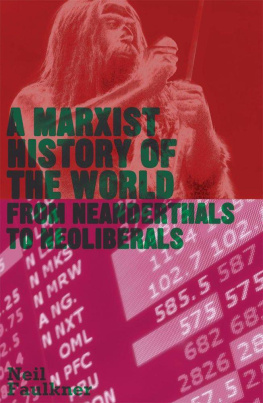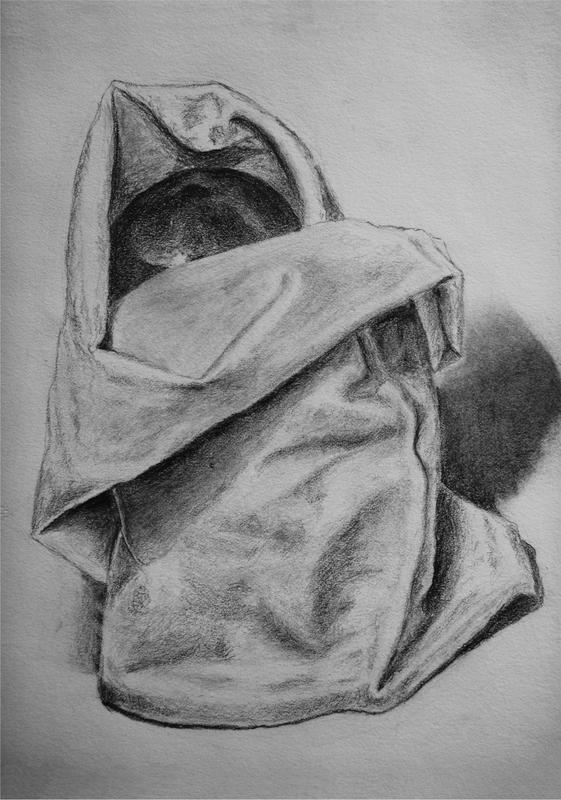Warren Carter is a staff tutor at the Open University and a teaching fellow in history of art at University College London.
Barnaby Haran is a teaching fellow in history of art at the University of Bristol.
Frederic J. Schwartz is the head of the Department of History of Art at University College London. He is the author of The Werkbund: Design Theory and Mass Culture Before the First World War and Blind Spots: Critical Theory and the History of Art in Twentieth-Century Germany.
Cover image: Karl Marx photographed in London in 1875 by John Mayall. Courtesy of the International Institute of Social History, Amsterdam.
Warren Carter, Barnaby Haran and Frederic J. Schwartz
T his book is the result of a project that had two goals. It was conceived as a Festschrift in honour of Andrew Hemingway, to mark the occasion of his retirement from the Department of History of Art at University College London. But the project quickly exceeded that initial objective, and for two reasons. First, a Festschrift implies the end of an academic career, something patently not the case with Andrew, who continues to teach, publish and supervise doctoral students. And second, his field of activity has always gone beyond the confines of a single academic institution, even one to which he contributed so much and whose direction he helped to determine over two decades. He was, for example, at the centre of the University of Londons Labour History Seminar for many years, and was the principal figure behind the Seminar for Marxism and the Interpretation of Culture (now renamed the Seminar for Marxism in Culture) that came out of it. He was also crucial to the development and continued profile of the Oxford Art Journal for many years. And he has been a tireless organizer of conferences the international MAVAN (Marxism and the Visual Arts Now) set the agenda for many for a decade symposia and volumes of collected texts. As supervisor, external reader and editor, he has encouraged and challenged scores of scholars, whose work has gained in richness, depth and rigour as a result. In a discipline once handicapped by insularity, he has been a key link between academics in the United Kingdom, United States, Canada, Germany and France.
Doing justice to such a wide range of activity and influence would have resulted in a publication three times this size. The book as it is, however, represents the attempt of the editors to gather a representative group of Hemingways colleagues, students and interlocutors in the service of the second goal: to provide a snapshot of the state of an art history that can be considered properly Marxist.
The volume is divided into four sections. Three of these correspond to areas of Hemingways own scholarly commitments, and one does not. The first section, Marxist Theory in Practice, addresses theoretical issues of materialist art history and explores case studies in the development of the tradition itself. Establishing an intellectual context for the rest of the book, John Roberts maps out the development of Hemingways own scholarship by situating it within the moment in the 1970s when a generation of academics, radicalized by the utopian moment of 1968, withdrew from the subject altogether, embracing instead the newly emergent domains of popular or visual cultures. Roberts charts what was at stake in Hemingways decision to stay within art history, reading his research through his initial attachment to a form of humanist realism and then the shift to a post-Adornian position in which the work of art is read as a form of symptomatic critique, all within a Lukcsian framework emphasizing the continuing importance of the concept of totality. Stephen Eisenman provides a personal account of another trajectory of the period: his formation as a radical art historian in California from the early 1970s through to the mid-1980s, from the moment when a Marxist art history was being forged with both Otto Karl Werckmeister and T. J. Clark at UCLA through to its recuperation and eventual eclipse in the 1980s. Looking at the development of this tradition through the prism of internal debates within the subject, its relationship to other radical traditions within the Californian academic system (including the presence of key members of the Frankfurt School) and the broader economic shifts impacting upon the university sector, Eisenman charts how the initial political optimism of the earlier work became transmuted into a form of political fatalism in which revolutionary defeat was preordained and avant-garde strategies were understood as compromised.
Warren Carter assesses the political rationale that underpinned Meyer Schapiros aesthetic theories during a period of emerging crises on the Left, in particular the schisms caused in the 1930s by the repressions of the Soviet Union. He situates Schapiros ideas in a dialogue with German Marxist debates on aesthetics, and traces the influence of Bertolt Brechts epic theatre and Georg Lukcss rival notion of epic realism in Schapiros thinking on public art, most notably the work of Diego Rivera, and later in Abstract Expressionisms gestural appeal against alienation. In the following text, Stewart Martin considers the basis of Marxs concept of the aesthetic in the sensuous materialism of Ludwig Feuerbach, and argues that Marxs break with the latter in his Theses on Feuerbach necessarily involved jettisoning any conception of the aesthetic. Martin shows that thinking through the consequences of this rupture allows a radical clarification of Marxs new conception of practice, as this emerges from his critique of sensuousness materialism (and idealism); and furthermore that this new vantage point suggests a new basis for an appreciation of Marxs relation to aesthetics, indeed a new orientation to the critique of aesthetics within the capitalist mode of production. Putting aside Walter Paters reputation as the leading art-for-its-own sake aesthete of the late nineteenth century, Matthew Beaumont addresses the seldom-explored sociality of Paters writings as a rebellious form of romantic anti-capitalism. Beaumont recasts details such as Paters homosexuality and his apparent antagonism towards modernity as contributory elements of a social dreaming based on utopian, liberatory impulses that equated with sensory aesthetic experiences, and indicates a modern, even prophetic, sensibility inherent in Diaphaneit, his putative manifesto. In the next contribution, Norbert Schneider, a key figure in the development of a left art history in the Federal Republic of Germany, provides an erudite reconsideration of Adornos influential critique of culture, exploring its sources, strategies and lacunae. Schneider shows something else too: that, as in the case of Werckmeister, art history emerging from the German New Left was not a passive recipient of critical theory but instead a unique and productive site from which to engage with this body of thought. Finally, Frederic J. Schwartz starts in non-Marxist territory a brief encounter between art historian Aby Warburg and sociologist Max Weber to explore how Warburgs work represented an ambivalent and uncomfortable engagement with turn-of-the-century debates about the nature and origins of capitalism. Paradoxically, Warburgs tentative and evasive treatment of the issue, Schwartz argues, proved influential for later critical theorists, from Ernst Bloch to Walter Benjamin and Siegfried Kracauer.
The second section, Landscape, Class and Ideology, focuses on a set of concerns that was crucial to the development of a Marxist art history in the wake of the New Left, while at the same time reconsidering approaches to this material. Alan Wallach explores aestheticizing tendencies within Hudson River School painting from the 1850s and 1860s, developments that had been obscured with the invention of the art-historical category of Luminism from the 1950s as a means both to market a particular type of landscape art and to define a home-grown pictorial model in the nineteenth century. Drawing upon the work of Pierre Bourdieu and examining the paintings of John F. Kensett, Wallach argues that these aestheticizing tendencies coincide with the needs of a particular patrician class seeking to distinguish itself through its aesthetic sensibility in an attempt to secure a cultural hegemony in line with its political and economic power in the post-Civil War period. Brian Foss shows how the landscapes of the Canadian painter Homer Watson from the turn of the twentieth century responded to the encroachment of industry and infrastructure on the wilderness , and were consonant with a nostalgic and selective discourse about nature that saw modernity as an imminent threat. Marketing himself as imbued with the pioneer spirit to an urban audience, Watson was caught between preserving a natural paradise and serving a cultural elite that the very destructive processes of modernization had enabled. Charles Ford uses the consideration of the class dynamics of an earlier period late-seventeenth- and early eighteenth-century England as a way to explore the emergence of the bourgeois public sphere as described by Jrgen Habermas. But Ford comes to decidedly un-Habermasian conclusions, seeing the wide-ranging work of polymath Roger North as negotiating a place for private knowledge in the new publicity of published and circulating texts. Despite the usefulness of Habermass categories in describing the origins of what we identify as the Enlightenment, the contours of privacy, publicity and authorship are drawn here in a very different way.

